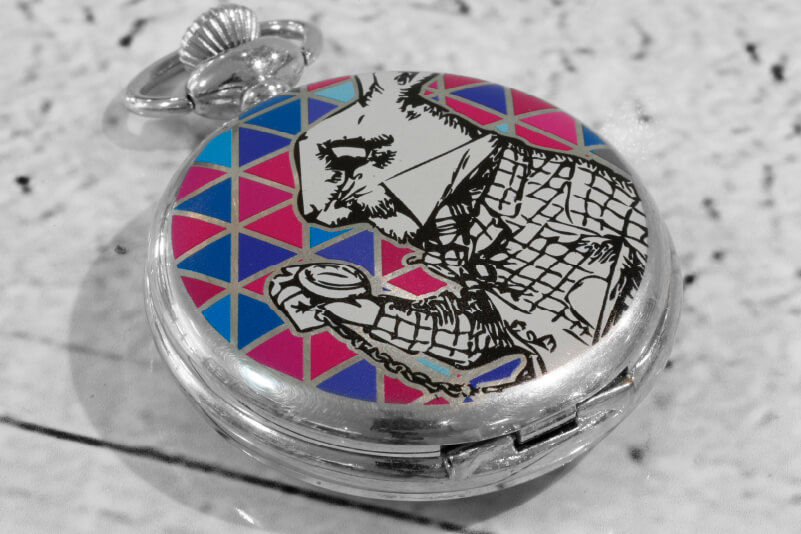Fewer people than ever are buying mass-produced, one-size-fits-all products, and shopping trends prove it. Year-on-year, consumer studies and surveys are showing consistent growth in demand for individually personalised items.
This has put pressure on businesses to find efficient and profitable ways to produce short runs and one-offs, as well as producing larger batches for their B2B needs. Digital printing technology offers several ways to address these needs and give businesses space to innovate and grow. Here are 4 of the most popular methods of customising solid objects using digital print.
1. Direct UV Printing

A pocket watch printed direct with a UV printer
UV printing is quickly becoming the number-one option for object customisation. Businesses of all shapes and sizes use this method to produce everything from personalised gifts to branded merchandise.
The ink is applied and cured by UV ink in the same operation, so there is no drying time and low heat. This means that the range of objects and substrates is virtually endless, including wood, glass, leather, and sensitive electronic devices. With the addition of printable primer, it’s even possible to print on difficult surfaces like stainless steel.
Note: For some applications, like food or hygiene related products, specialist flatbed eco-solvent printers can produce print which can satisfy a larger selection of rigorous safety guidelines.
2. Transfers and Stickers

A water flask customised with a metallic sticker
Printing stickers is a popular and accessible method of customising objects. In its simplest form, a sticker of any size and shape can embellish the surface of any object, if the surface is smooth and clean. More advanced forms include custom skin kits, or sticker sets which are precisely cut to fit onto the surfaces of video game consoles and controllers.
Printer/cutters can print high-definition graphics onto self-adhesive vinyl (SAV) and accurately cut even the most elaborate shapes. With the addition of white ink, it’s even possible to create stickers from reflective, metallic or holographic SAV.
3. Vinyl Wrapping

A car with a custom printed wrap
If you need to customise larger objects, the fine art of vinyl wrapping is a great solution. This method is most popular with customising vehicles and it’s the standard approach used by motorsports teams. It’s also used to customise consumer items like fridges or decorating irregular surfaces like brick walls in interior décor.
First, the design is printed onto special, non-shrink vinyl (“cast” vinyl) using a wide-format printer. It is then carefully applied to the surfaces with the aid of a heat gun to soften the vinyl and a squeegee to smooth the vinyl, avoiding bubbles and creases. Although it requires practice to master, it is a highly valuable skill which commands high prices.
4. Engraving

Two necklaces with engraved photos and text
For everything from name plates to glass vases, engraving is a cost-effective and impressive way to customise a range of objects. With several methods available, it has become a popular choice for producing trophies and awards and creating personalised keyrings and jewellery.
Rotary engravers precisely carve details from the surface of the item using a high-velocity spinning bit and CNC plotting technology and it is a great method for carving wooden plaques and plastic plates. Besides wood, laser engravers can also etch or mark substrates like glass and can even be used to customise bottles and other cylinders with the aid of a rotary attachment.
Conclusion
All these methods have their own strengths, but they have one thing in common: they can help you answer the growing demand for unique, custom products. What’s more, these digital technologies are easy to learn and integrate with your business, which means you can start getting a return on your investment in no time.
If you want to know more, or to find out which solution best suits your needs, take a look at our the Personalisation Applications section on our website.
